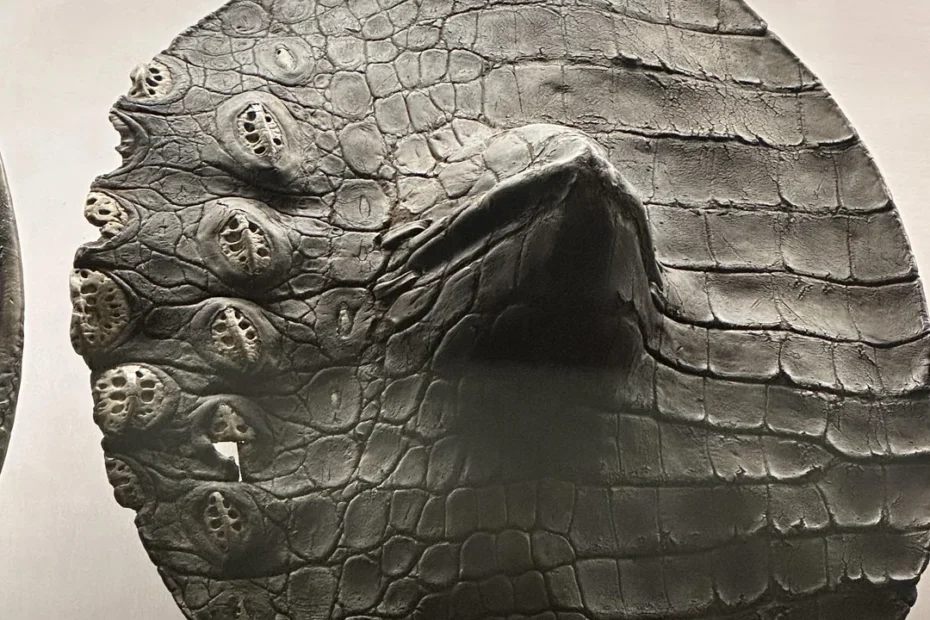HERE ARE SOME OF THE ANSWERS:
My title describes the thing.
It’s a shield made of some kind of leather. I found it at the National Denmark Museum. The shield is maybe 4 feet high so you kind of approximate the size of the things embedded in it. It seems like barnacles but nothing I found really matches.
This whole thing makes me uncomfortable.
Was this a shield that was used in Demark, or was this a display of items from somewhere else? I wasn’t aware crocs or alligators roamed Denmark.
Those are scutes, part of the skin of the original owner of the leather. And funnily, the word scute comes from the latin scutum, which means shield. So, it’s a shield with shields on it.
They look like leaf stomata, or that giant facehugger creature from Prometheus, or just that specific type of phobia everyone claims to have.
It’s a shame that all the crocodiles in Denmark were killed to make shields 😉
Those are called Scutes. They are the bones that make up the plates on an alligator or crocs back.
Those are called Scutes. They are the bones that make up the plates on an alligator or crocs back.
Those are the back ridges from a croc. Shield appears to be made of croc hide.
those look like skeletal turtle or tortoise shells with portions of the scutes removed
As of my last update, the National Museum of Denmark (Nationalmuseet) in Copenhagen has a rich collection of archaeological artifacts, including items from the Viking Age. One of the notable types of artifacts in their collection includes shields.
A famous example is the shields from the Viking ship burial at Trelleborg, a Viking Age fortress. These shields are typically round, constructed of wood, and often covered with leather. They were designed not only for protection in battle but also bore significant decorative and symbolic elements that might have denoted status or affiliations.
These Viking shields are characterized by their round shape, usually about 80-90 cm in diameter, and often feature a central metal boss, which is a protruding cover that protects the hand. The construction involved planks of wood fastened together, then covered with hide or leather and bordered with leather or rawhide to prevent splitting. The color and decoration on the shields could vary, sometimes painted in vibrant patterns or motifs that held cultural or symbolic significance.
If you are interested in a specific shield or a more detailed description of a particular artifact at the National Museum of Denmark, it would be great to have more specific details or you might consider visiting their official website or contacting them directly for the most accurate and detailed information.
